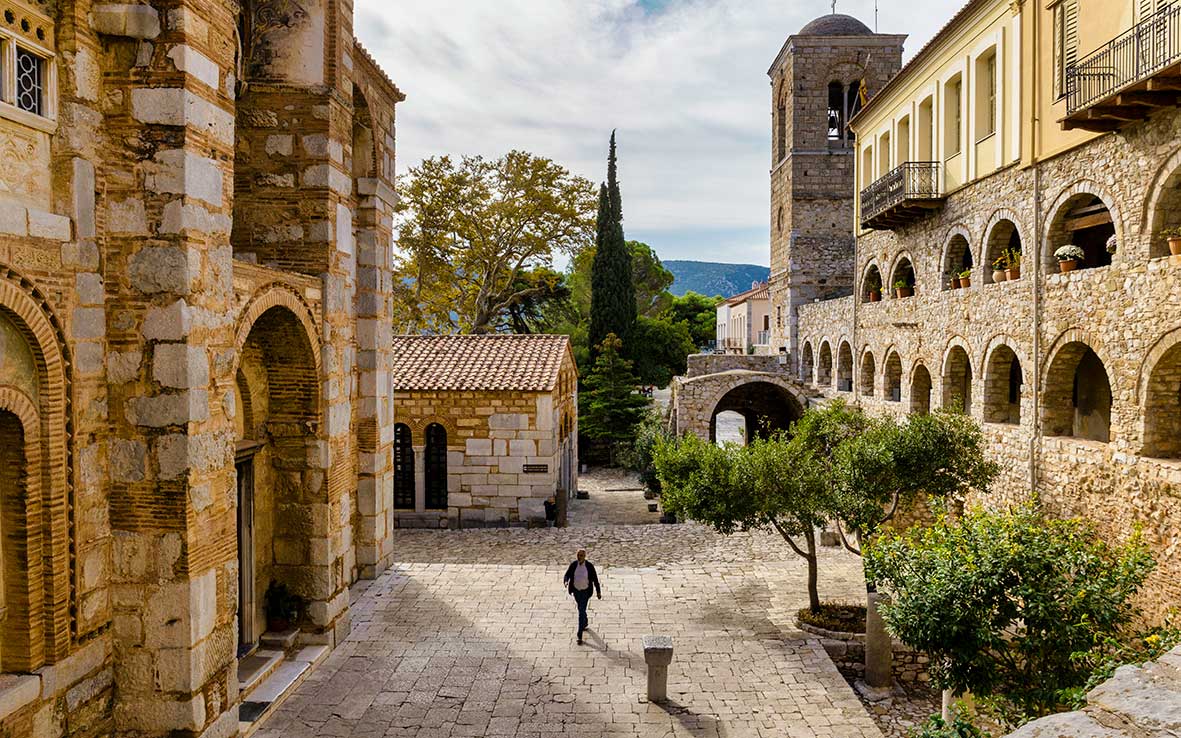We toured the south of Boeotia, along the Gulf of Corinth, an area rich in archaeological sites, cultural tradition and picturesque villages. We visited the Valley of the Muses in Askri, which was famous for its poetry and theatre festivals, Hercyna River in Livadia, which gushed forth from the play of the nymph Hercyna with a goose, Cadmeio, at the acropolis of Thebes and the monastery of Hosios Loukas, a UNESCO World Heritage Site. Journeys in time that inspire and motivate modern Boeotians to continue creating in the land of their ancestors.
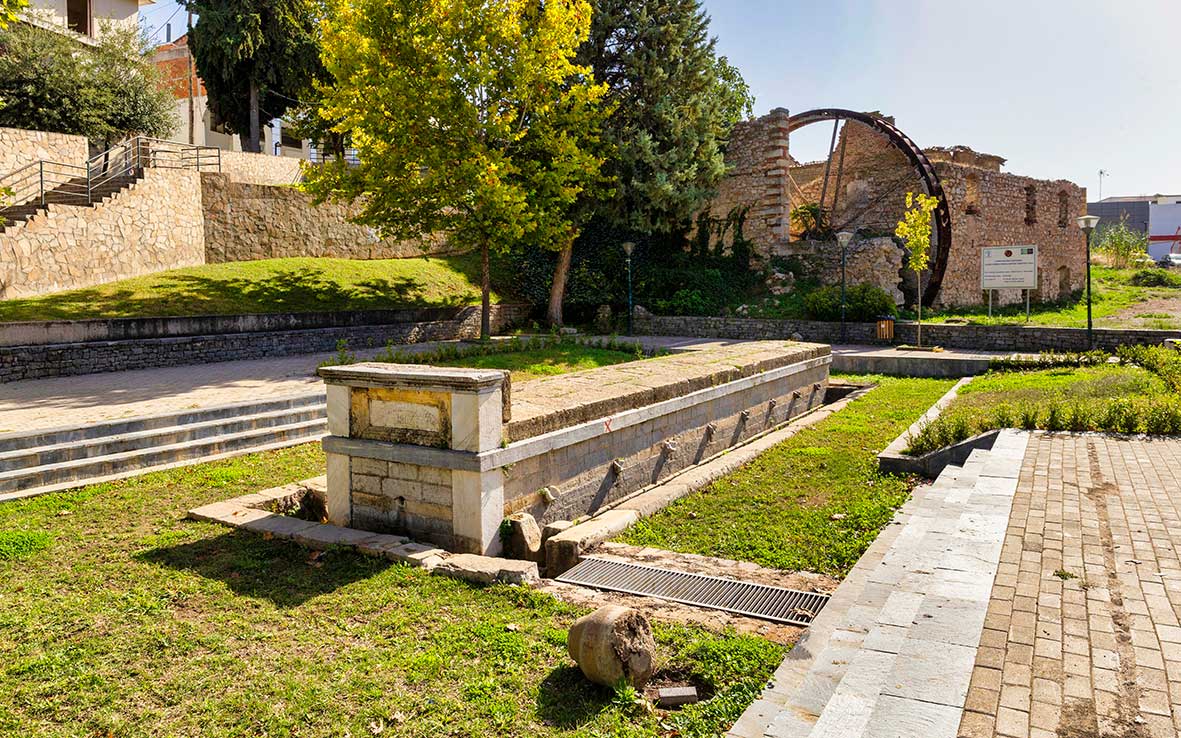
© Perikles Merakos
The Museum-Destination
The Archaeological Museum of Thebes is a typical example of a regional museum that, since its opening in 2016, has managed to become a point of reference for the city that hosts it. In its premises, the past of Boeotia is revived, from the birth of the mythical Heracles to the Turkish rule and the modern age. The short tour of the balcony allows the visitor who does not have a lot of time at his disposal to get a brief but concise sense of the museum narrative.
On the long tour, meanwhile, the visitor travels through the exhibits to all the periods of habitation of the area, from the Paleolithic – Neolithic times. The Mycenaean civilization gallery is of particular importance. It hosts texts in Linear B script, which provide information about the state of Thebes and the political influence of the palace in Greece (e.g. the seal stones confirm that it maintained relations that reached as far as Babylon), the kouroi from the sanctuary of Apollo in Akraifnio, impressive larnakes where the dead were entombed, objects of daily use, etc. From the Archaic period, it is worth seeing the famous Boeotian terracotta figurines, a microcosm of sculpted stones, an art the Boeotians mastered. Also look for the copy of the Cadaster compiled by the Boeotians in the late 11th century AD – the original is in the Vatican.
Info
The Archaeological Museum of Thebes (1 Threpsiadou, Keramopoulou Square, Τel. (+30) 22620.279.13, www.mthv.gr) is open every day except Tuesday, 08:30-15:30 (winter opening hours). General admission is 6 euros.
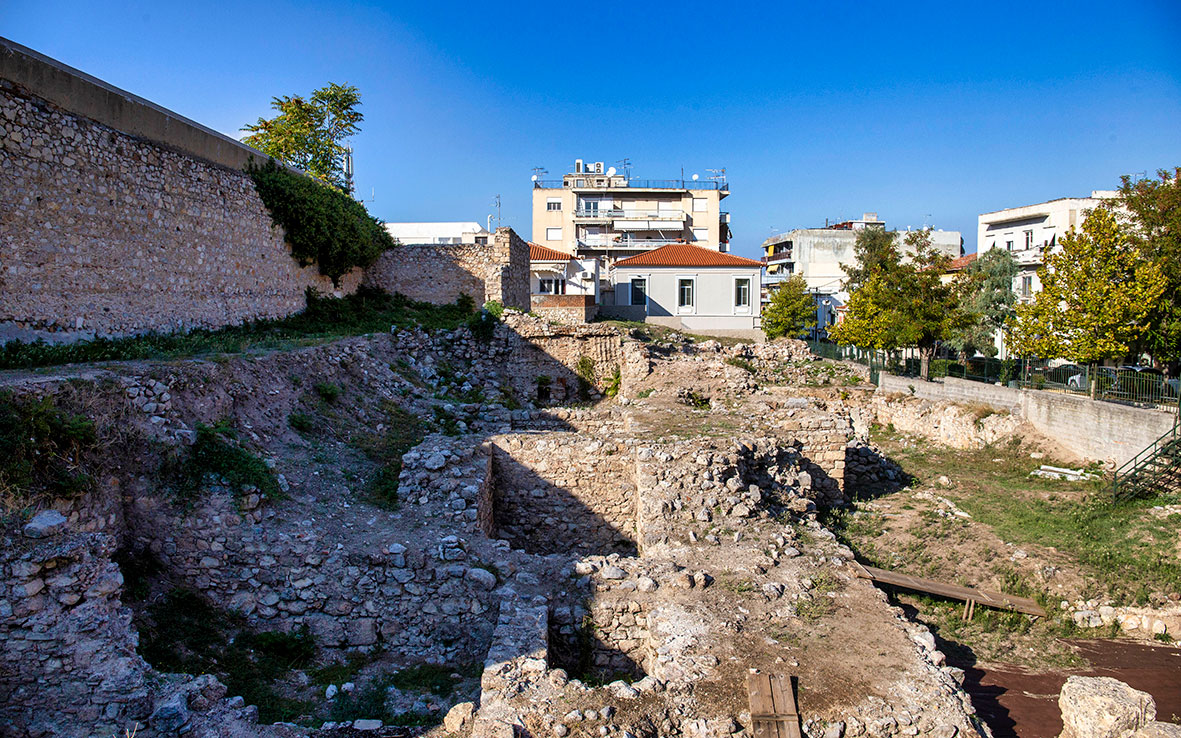
© Perikles Merakos
The courtyard is dominated by the medieval Saint Omer Tower, which is part of the medieval fortification of Thebes. Tombstones and lions, inscriptions and statue bases are also on display.
There are no organized archaeological sites in the city, however the museum has created a printed map of cultural routes within Thebes, which help the visitor locate the remains of ancient monuments, Byzantine churches, fortification walls and other points of interest, such as Cadmeio, the building of the Mycenaean palace that housed workshops, the Fountain of Oedipus, etc.
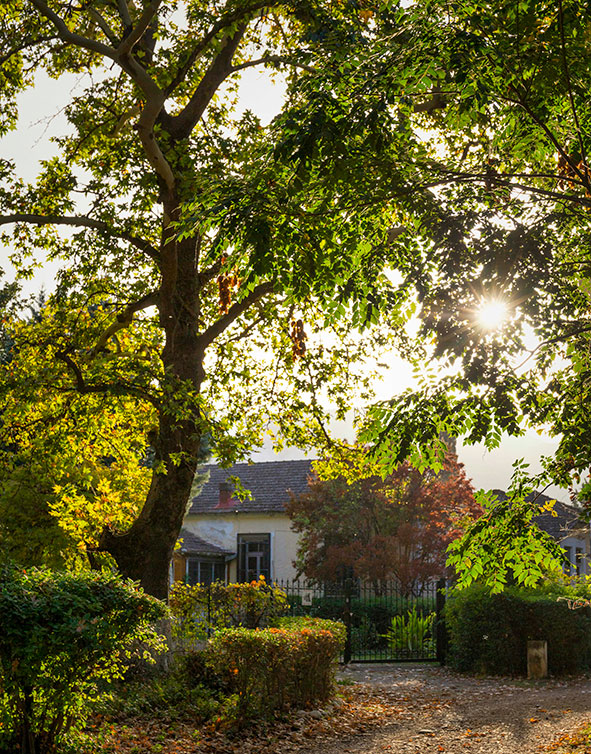
© Perikles Merakos
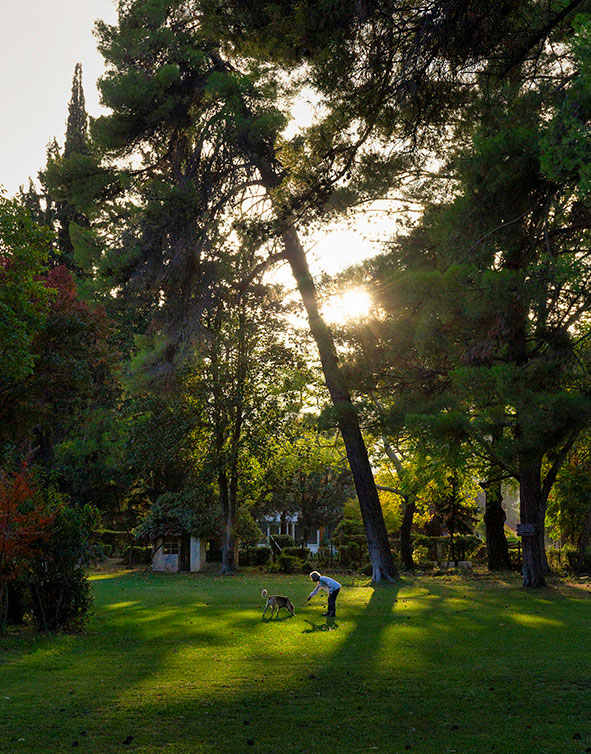
© Perikles Merakos
The Gardens of Aliartos
Among the rare examples of English gardens in Greece, the Gardens of Aliartos stood out for their elegance and simplicity. In the middle of the 19th century it was the English company Lake Copais that had undertaken the drainage of Lake Copaida and its presence is evidenced by a series of abandoned industrial buildings (stone warehouses, stables, water mills, etc.) along the main street of the village, as well as by the large area occupied by gardens, where administration offices, outdoor event spaces and Englishmen’s residences with tennis courts, well kempt flower beds, etc. were located.
In 1953 the buildings came to the Greek state and recently to the Municipality of Aliartos. The place no longer has the glamor of those years, but it still fascinates the visitors by inviting them to imagine the walks and sports that took place in the gardens or the dances that were organized in the great central building.
Info
Aliartos is 20km from Thebes.
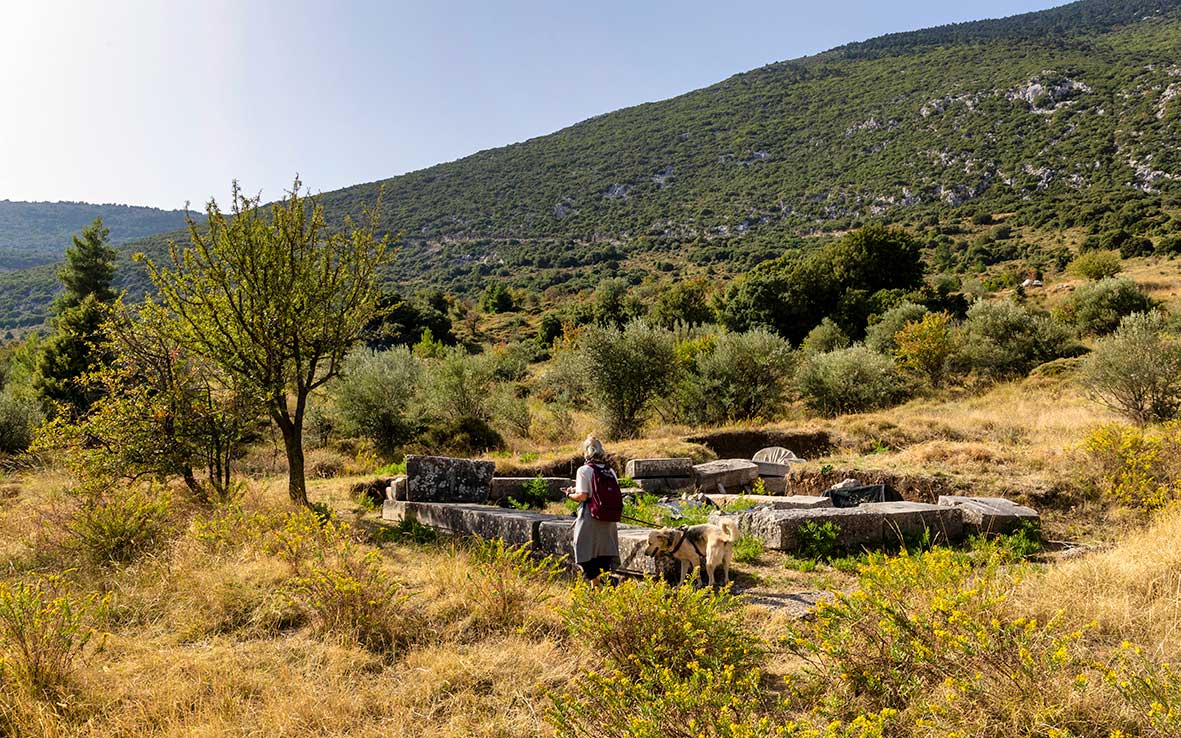
© Perikles Merakos
Conversing With the Muses
Askri was the hometown of the ancient poet Hesiod, but it is also connected to the place where the Heliconian Muses lived, on the eastern slopes of Mount Helicon. During the antiquity, from the 3rd century BC, the Museia, celebrations dedicated to the nine Muses, were held every five years in the Valley of the Muses. These celebrations included poetry, music, theater plays and games with participants from all over Greece.
In this area there was the Ionic stoa, where the votive offerings were kept, the ancient theater, a temple and nine pedestals with statues of the muses, but also a multitude of other statues, such as the statue of Linus, the poet, to whom a sacrifice was made before the start of the festivities. It is said that Plutarch wrote his “Eroticus” here, and that in one of Helicon springs, Narcissus was dazzled by his own beauty and plunged into its waters.
Info
Askri is 23km from Thebes. The Cultural Association is very active, with interesting actions throughout the year, which are announced on its Facebook page.
Today few remaining elements betray the glorious past and only a few travelers make it this far. Until recently, the Cultural Association of Askri, “Hesiod”, revived festivals in the valley with theatrical and musical events. Ηowever recently, these festivals have started to take place in the village square, as the access to the grove is only possible by a dirt path and it is not easy for everyone.
On the way back to the village, take a short detour to visit the stone church of the Resurrection of Christ overlooking the vineyards of Boeotia. From Askri you can go to the northern side of Mount Helicon, to the village of Evangelistria, which, according to some travelers, is connected to the Duchy of Athens-Thebes during the period of Catalan rule (1311-1388). Visit the homonymous nunnery, hike to explore the mountain and climb to the site of the Hippocrene Spring (1,280m), which according to legend was created by the hoof strike of Pegasus, the winged horse of Bellerophon.
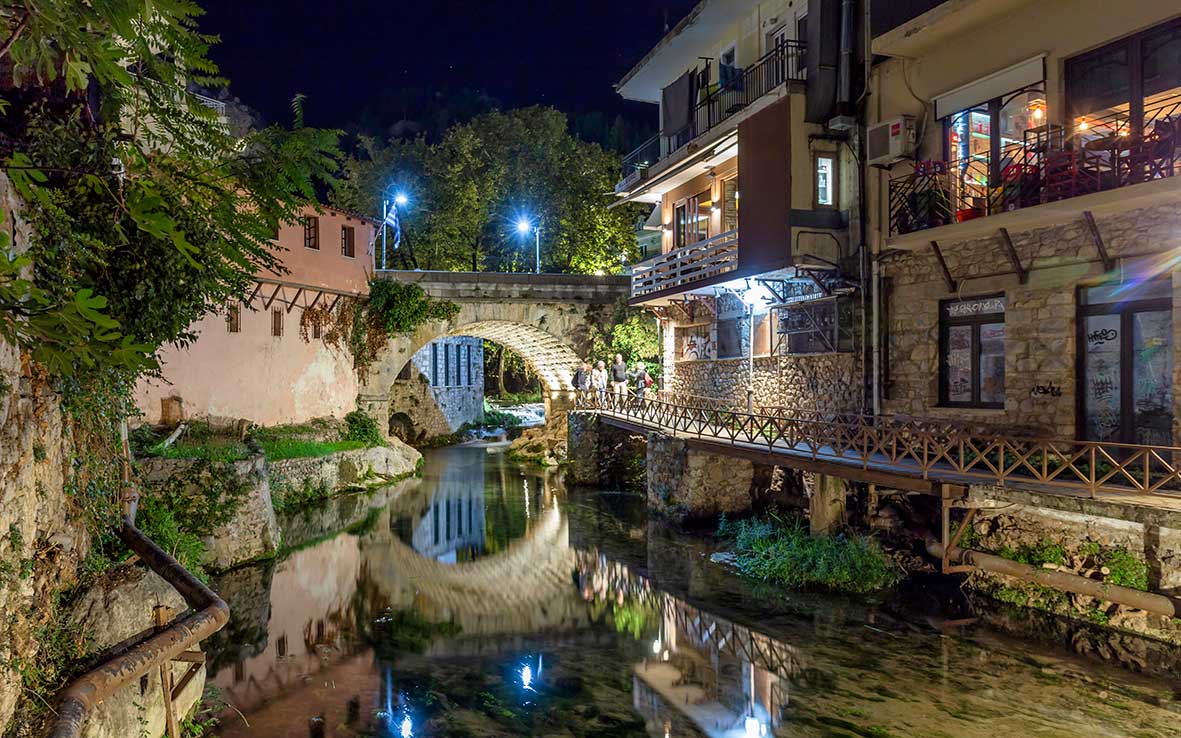
© Perikles Merakos
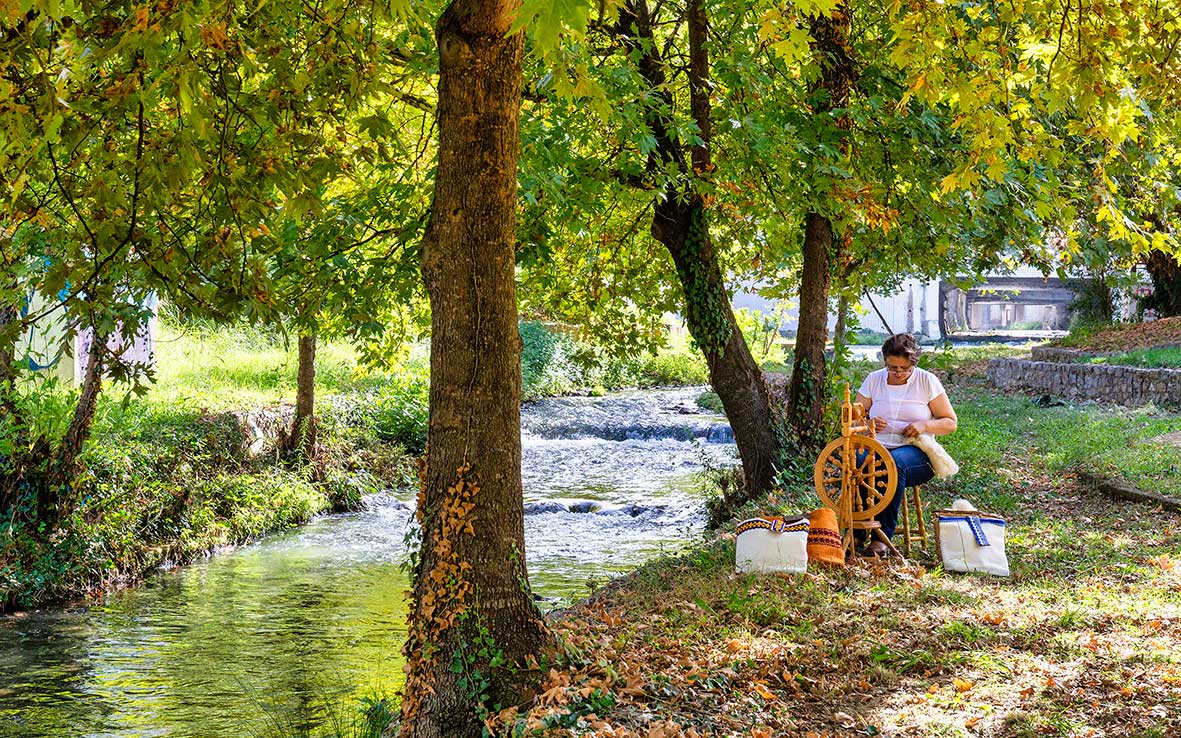
© Perikles Merakos
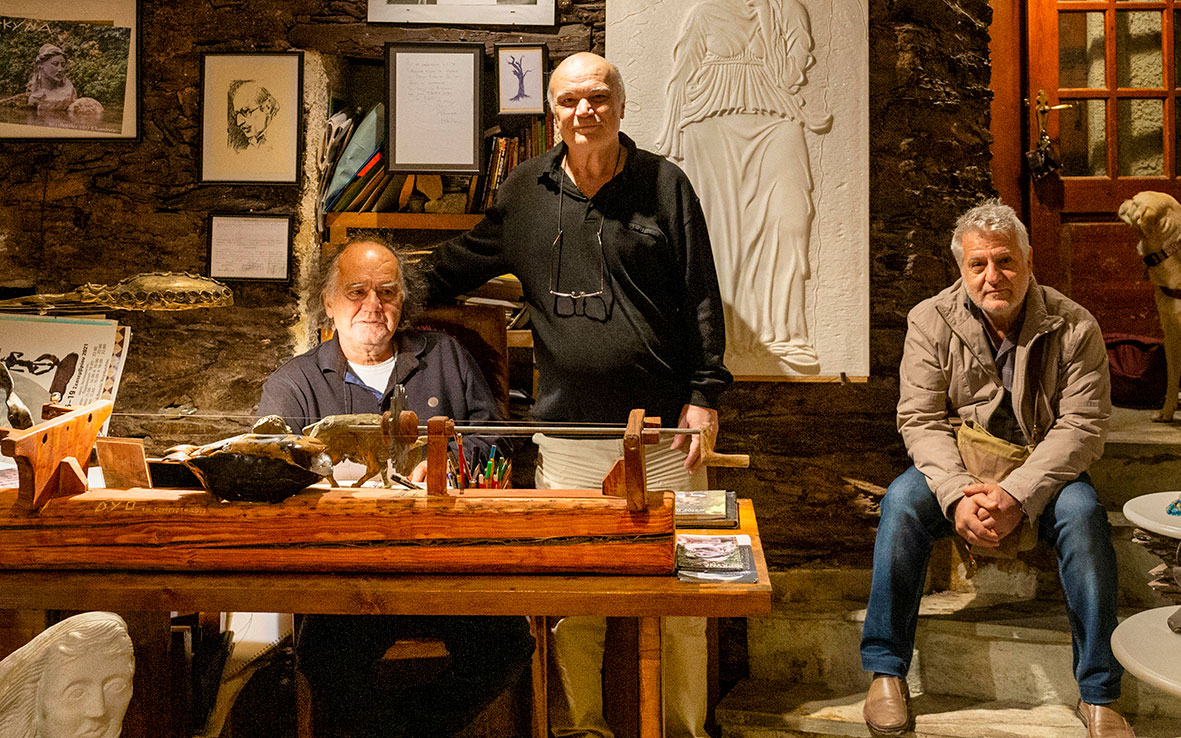
© Perikles Merakos
Works of art in Lafysti and Livadia
Two things, an international cartoon festival and textile art, connect the small village of Lafysti in Boeotia with the capital, Livadia. It was 26 years ago, when the amateur cartoonist Giannis Geroulias, originally from Lafysti, was fascinated by his visit to the cartoon exhibition hosted in the city of Angouleme, France. Eight years later, in 1996, he organized the first cartoon exhibition at the school of the village, which today has evolved into an annual international festival, which is honored with the presence of renowned Greek and foreign cartoonists. By his side is his teacher and mentor Spyros Gourgiotis, in whose workshop Geroulias learned and loved cartooning.
You will find Gourgiotis working every day in his studio, where he creates his works. His sculptures, such as Hercyna with the goose, adorn the Springs of Krya, in the old town of Livadia.
Chrysanthi Tseprailidou, who has been weaving since she was a child and today lives and works in Livadia, set up her first loom in Lafysti. In her workshop she weaves pashminas, traditional home textiles, bags, etc. This year she plans to start weaving classes again for those who wish to learn the art.
Info
Spyros Gourgiotis’ studio: 40 Stratigou Ioannou, next to the bakery, Τel. (+30) 22610.282.18
For info about Chrysanthi Tseprailidou’s weaving classes: Tel. (+30) 6937.111.081
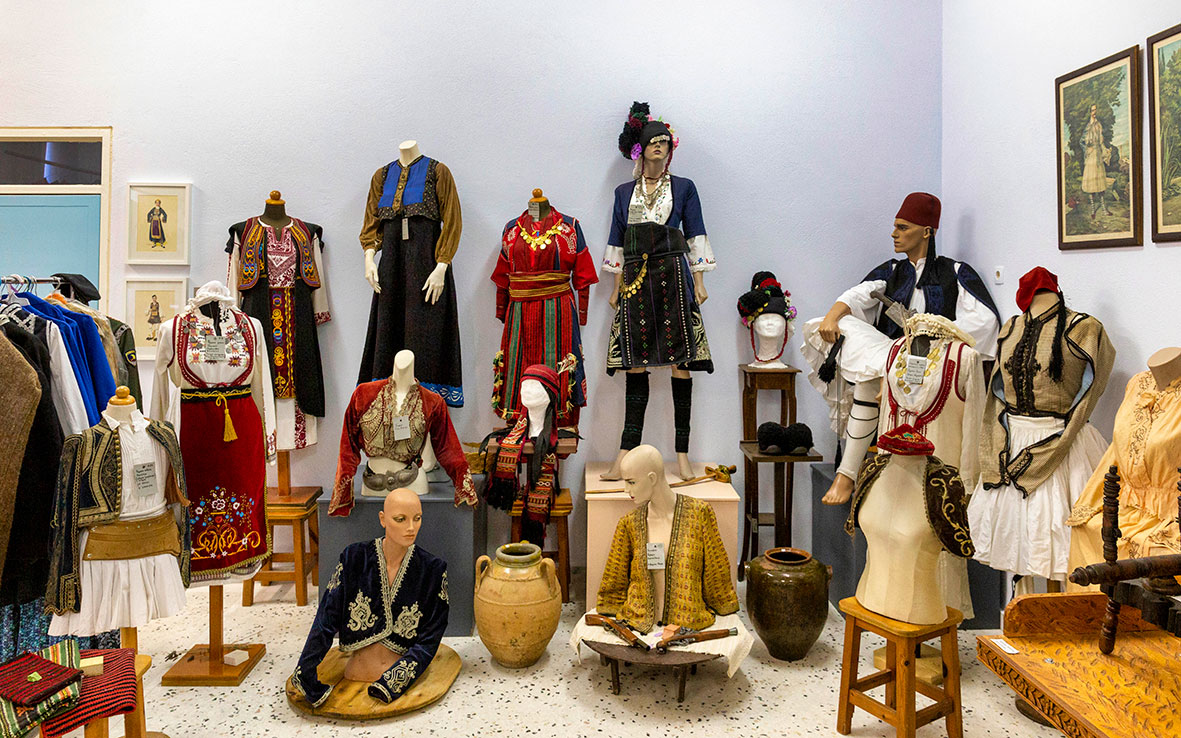
© Perikles Merakos
Allotropia: A multi-thematic museum in Antikyra
In the small coastal village of Antikyra, named after the mythical friend of Heracles, Antikyreus, Dimitra Parascharaki and Dimitris Tzouvalis created Allotropia, People’s Academy of Preservation of Cultural Heritage and Contemporary Art, in 2014. It is a multi-thematic museum, which, through the different sections of its collection, attempts an original experiential tour using history, tradition, science and fine arts as a vehicle. In other words, it transforms the tour into more than one experience, introducing in a special way the many and different faces of culture.
“Allotropia,” which is one of the main reasons to visit Antikyra, has 17,000 items and is housed in an area of 800 sq. m. in the school complex of the village. It has a library with 40,000 book titles, an ethnographic collection with 150 costumes, a folklore collection, an archive of Greek music, an exhibition of old professions, a gallery with paintings, sketches, photographs and sculptures by Greek and foreign artists, which are either exhibited periodically as part of some action or are permanent exhibits. It also organizes workshops on ceramics, painting, creative writing, cinema, etc.
Info
Antikyra is 35km from Livadeia. Information on visits to Allotropia at Tel. (+30) 6985.966.264.
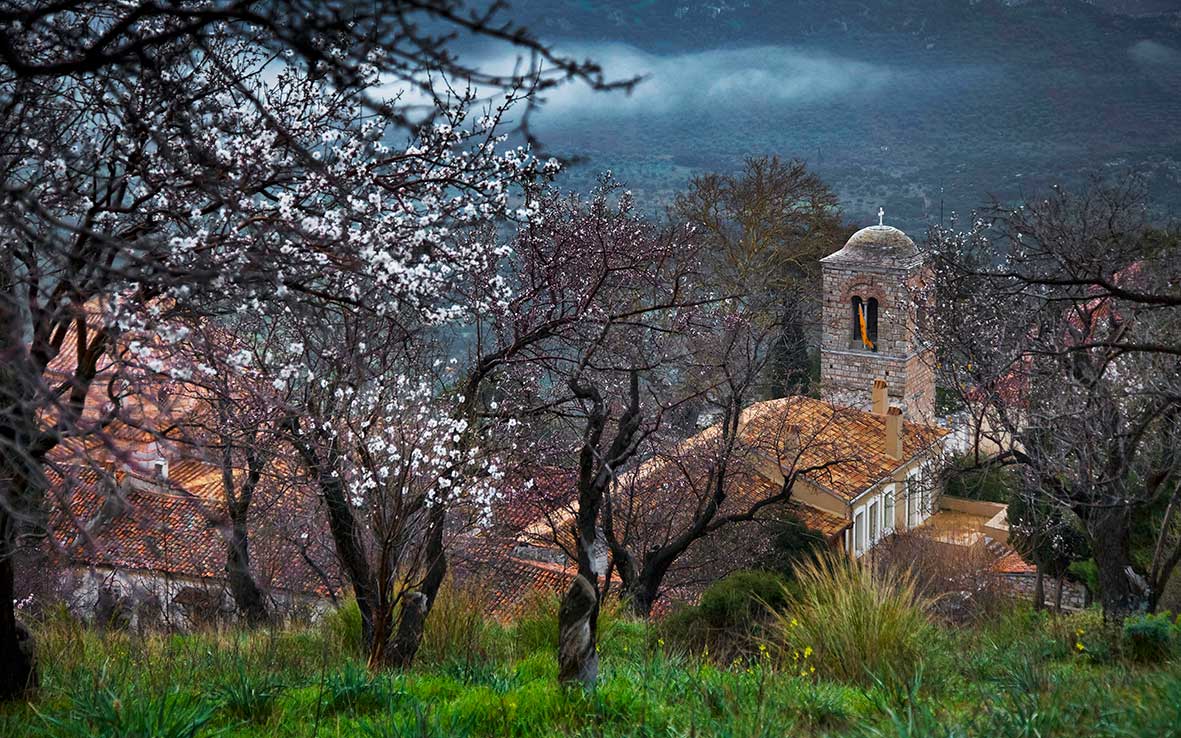
© Perikles Merakos
Monastery of Hosios Loukas: a Byzantine and Universal Monument
Dating back to the 11th century, the Monastery of Hosios Loukas (Saint Luke) is considered one of the most important monuments of the Middle Byzantine period and has been included in the list of UNESCO World Heritage Sites. The mosaic decoration of the church with the figures of holy monks and the frescoes of the crypt are considered excellent examples of Byzantine art.
The monastery can be visited every day, but especially during the Sunday liturgy, the attendance of people is great. Where once was the cell of Loukas of Steiris, today stands the Crypt of Aghia Varvara with the marble tomb of the Saint, whose remains were moved in 1911 right above, to the spot where the large imposing church of Hosios Loukas joins with the smaller church of Theotokos.
Info
The Monastery of Hosios Loukas is 32km from Livadeia. Visiting hours are 09:00-16:40, Tel. (+30) 22670.222.28.
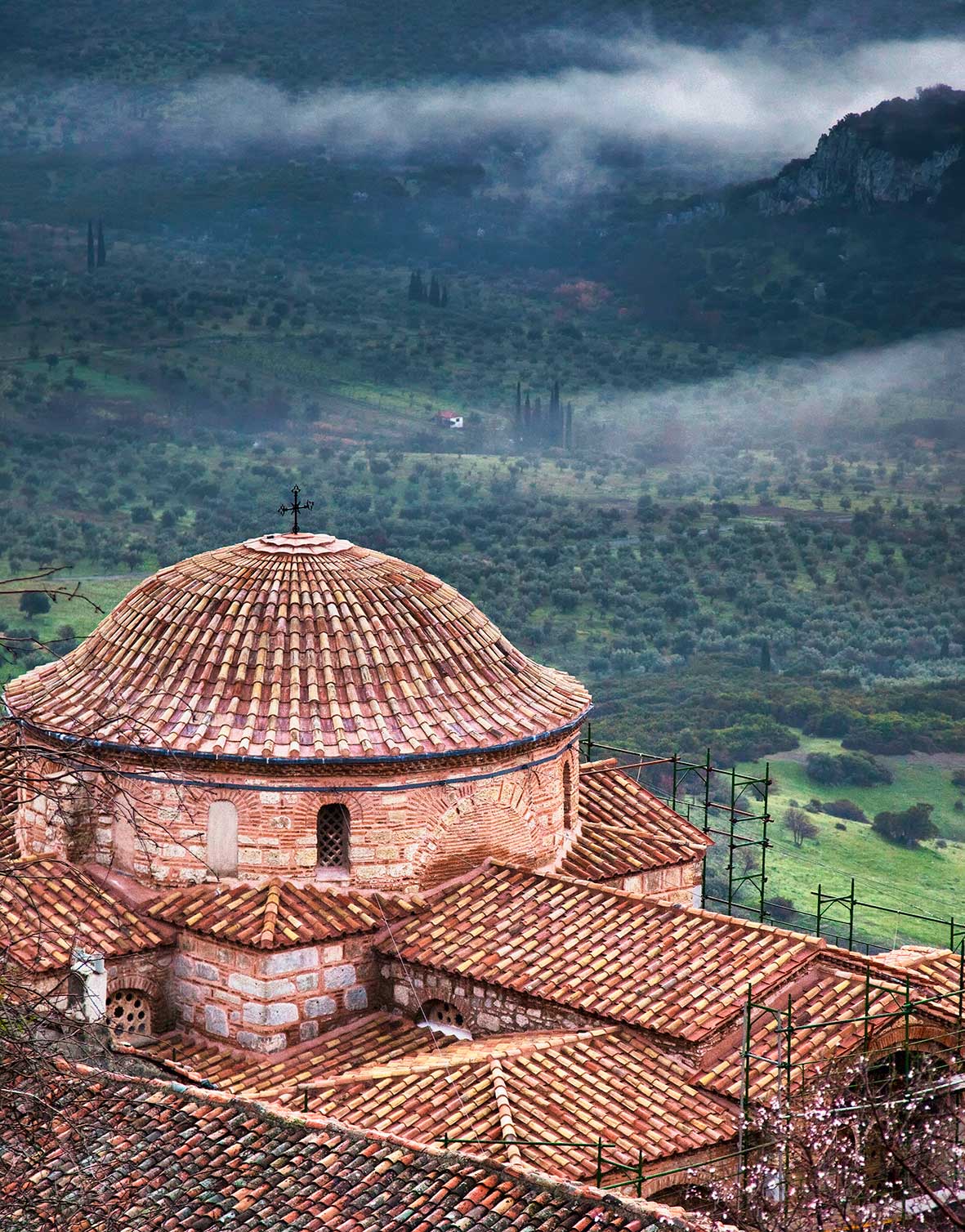
© Perikles Merakos
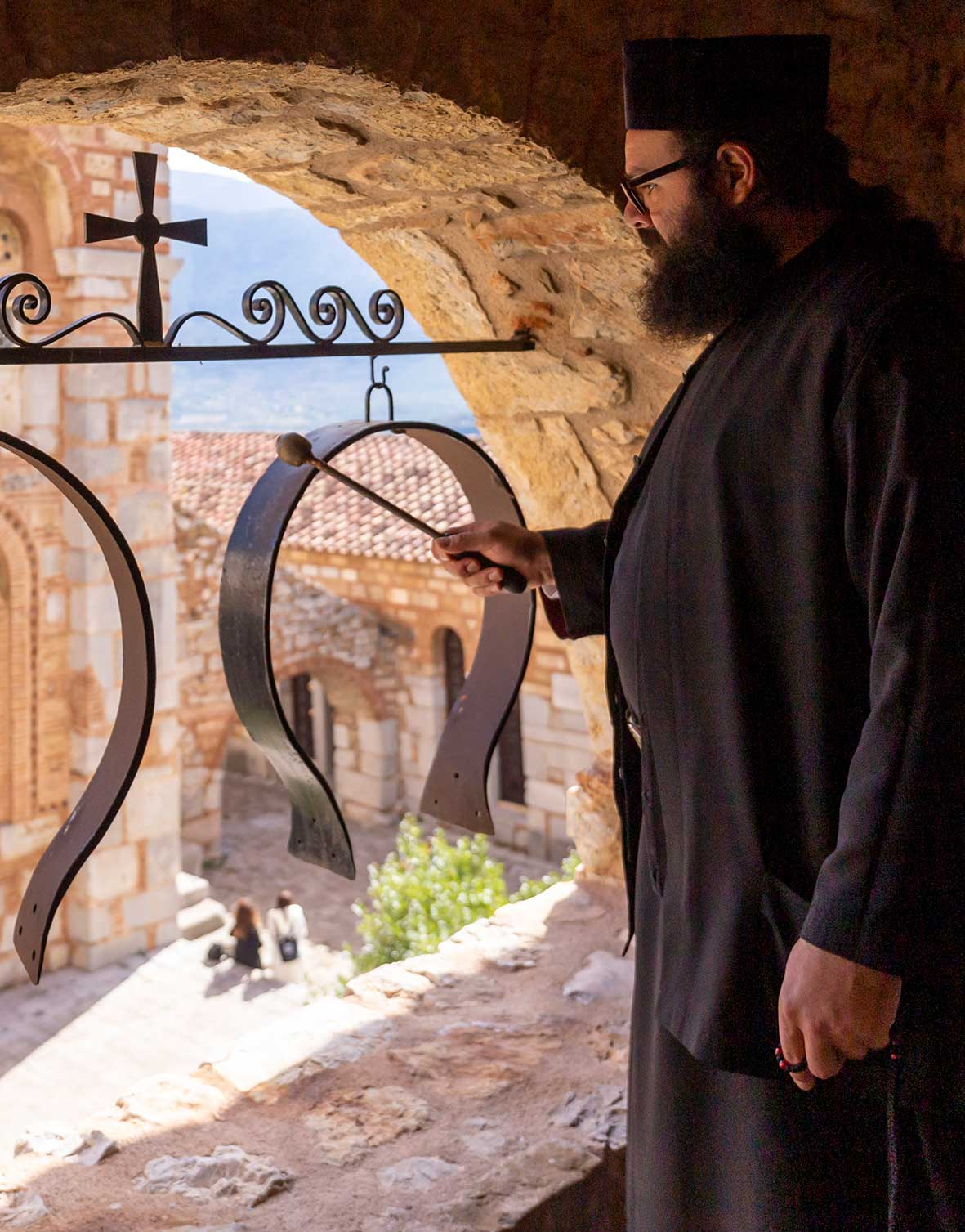
© Perikles Merakos
The monastery has the typical features of fortified architecture, since it was a fortress. The cells of the monks were around the walls, while over the years a peculiar commune was developed, as it is said, as each monk had his own house. The western gate (after the arch of Aghia Varvara) was the central gate of the monastery, while the eastern one that is used today, was the exit to the fields. The monastery had an important role both in the Greek Revolution of 1821 and in the years of the Occupation, during which, its south wing was bombed.
Today, the (old) commons function as a museum, housing extant parts of the monastery buildings. Right below, in the restored stables, you will find on display frescoes dating back to the 18th century, which have been removed from the church of Aghios Spyridonas in Antikyra.
After visiting the monastery, it is worth enjoying the view of the olive grove and the gardens that surround it, having a coffee in the courtyard. There is also a traditional grocer, where you will find products by local producers – tasty souvenirs from your tour of the wider area.
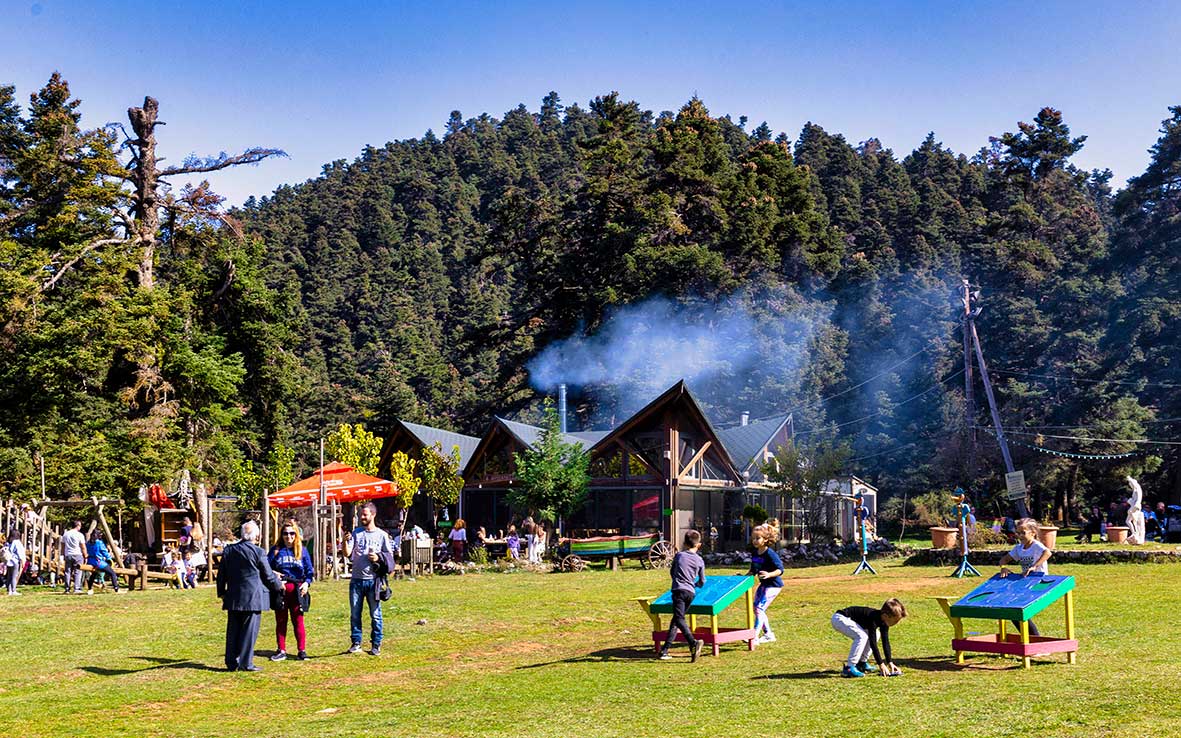
© Perikles Merakos
Two Villages, Two Museums
An excellent starting point for your excursions in the wider area is the mountain village of Kyriaki. Built at an altitude of 760m, it has guesthouses, cafés, tavernas that are open every day, several young residents active in cultural matters and a small folklore museum that introduces the visitors to the Arvanite identity of the place. In its premises, the typical Arvanite residence and its rooms are revived and objects of daily life are exhibited, such as a loom, a bride’s dowry, agricultural tools, etc.
The village is visited by hiking and climbing clubs, as the Hellenic Mountaineering Association of Kyriaki is very active and tries to highlight the nature and trails of the area through actions that are not limited to walking or climbing. Every summer it organizes the Arvanitsa Music Forest Festival, which has now become an institution. Arvanitsa Café-Restaurant operates here all year round. Its owner has designed the surrounding area with various activities for children and picnic tables. The menu includes mainly grilled and roasted meats, but also cheese pies, salads, coffee, etc.
Info
For information about the Folklore Museum of Kyriaki contact Mr. Babis Karalis, Tel. (+30) 6984.061.491).
Arvanitsa Café-Restaurant: Tel. (+30) 6972.831.279
Information about visiting hours, Christos Poulos, Tel. (+30) 6938.003.262.
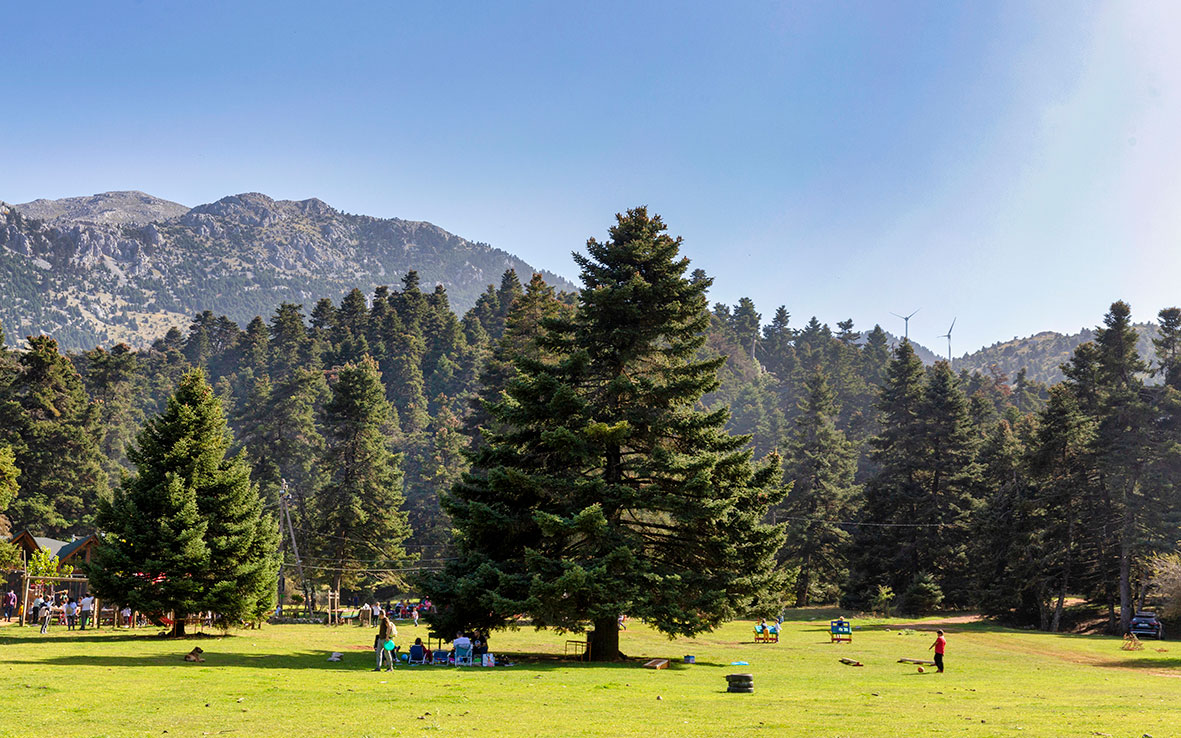
© Perikles Merakos
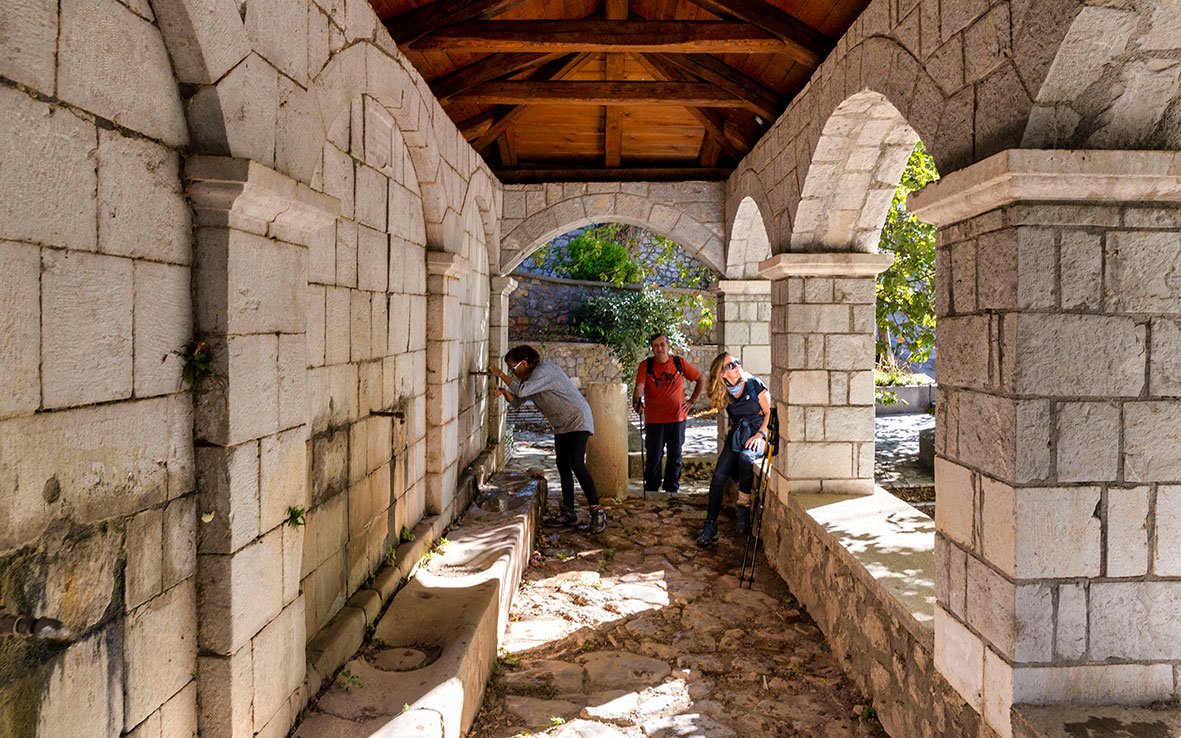
© Perikles Merakos
Τhe village that is located higher than all the other villages, up on Mount Helikon is Helikon (or Zeriki). At the entrance of the settlement, the old primary school houses the Museum of Rural Folk Heritage of Helikon since 2010. The members of the museum’s board, Chryssa Kanda, Maria Korogiannou and Christos Poulos, guided us through its collection, which includes traditional agricultural and livestock tools, items connected to old professions, such as shoemaking, etc. We saw, among other things, the school’s wood-burning stove, for which each pupil had to bring a piece of wood from home, lanterns they used for lighting, washtubs for the lye, a wooden dough bowls where the dough was kept to rise, wine barrels (as each house once produced 5-10 tons of wine a year), a carder that was used to clean the wool, clothes, photographs, animal bells and much more.

